If you've got stubborn apps on your Android that won't uninstall, start by identifying them and checking their permissions. Sometimes, apps resist removal due to unnecessary permissions or background activity. Disable the app through Settings, then clear its cache and data to free up space. If that doesn't work, boot your device in Safe Mode to make uninstallation easier. Alternatively, consider using third-party tools like CCleaner for a more thorough approach. Each step empowers you to regain control over your apps, making your device run smoother. Stick around for more tips on optimizing your Android experience!
Key Takeaways
- Boot your device into Safe Mode to disable third-party apps and simplify the uninstallation process.
- Navigate to Settings > Apps or Application Manager to locate and uninstall the stubborn app.
- Use the option to clear cache and data before attempting to uninstall, improving app performance.
- Consider disabling the app first to halt its activity without complete removal if uninstallation fails.
Identify the Stubborn App

To kick things off, pinpointing the stubborn app that's causing you trouble is the first step in reclaiming your device's space and performance. Look for apps that have unusual or excessive app behavior, like draining your battery or hogging storage. You know the ones—those apps that seem to slow everything down and just won't budge when you try to uninstall them.
Check your device settings to see which apps are using the most resources. This is a great way to identify the culprits.
You might also want to browse through user reviews in the app store. Often, other users share insights about the app's performance and any issues they've faced. If a lot of them mention problems, it's a solid indicator that you've found your stubborn app.
Check App Permissions
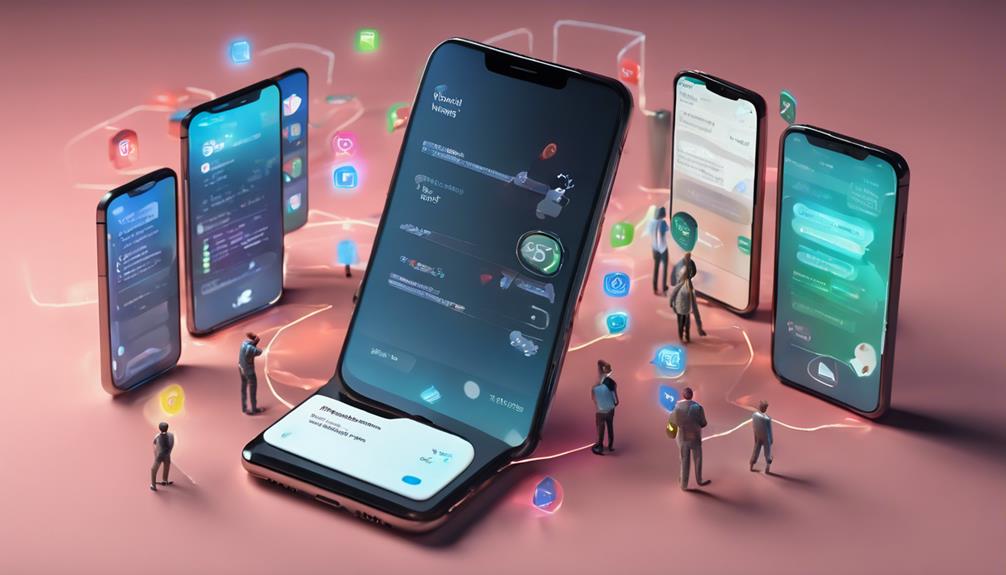
Before you uninstall that stubborn app, take a moment to check its permissions and see what access it's been granted. Understanding app permission management can help you decide whether to keep or remove the app. Here's a quick permission settings overview to guide you:
- Access to Camera: Does the app need to take photos or videos? If not, it might be overly intrusive.
- Location Services: Check if the app requires your location. If it's not relevant to its function, consider uninstalling it.
- Contacts Access: Some apps ask for access to your contacts. If it doesn't need this to perform its main tasks, this is a red flag.
- Storage Permissions: Determine if the app needs to read or write to your storage. If it's unnecessary, it may pose a security risk.
Disable the App
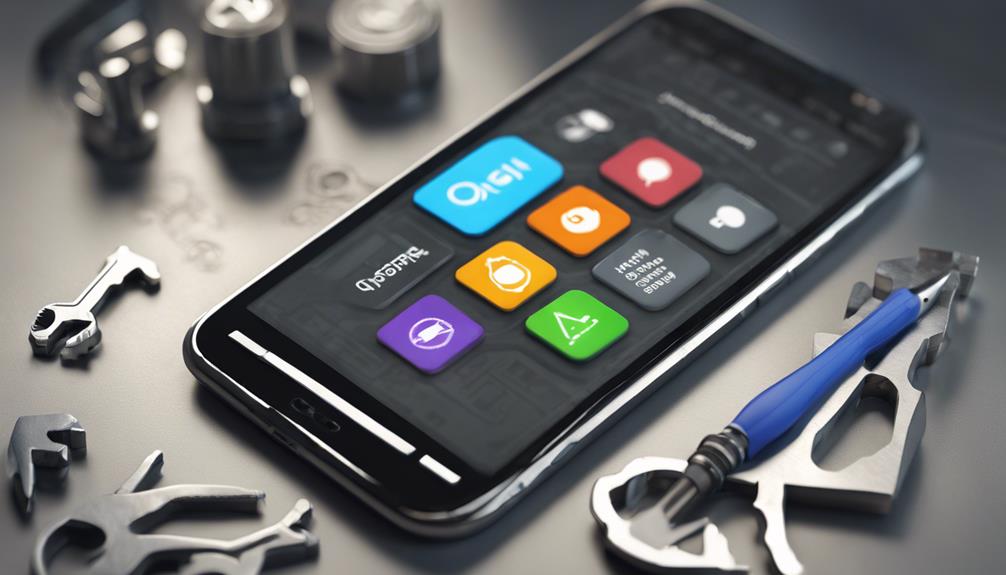
Disabling an app is a quick way to stop it from running without completely removing it from your device. If you've got a stubborn app that you can't uninstall, disabling it can effectively halt its app functionality. This is particularly useful for system apps that come preinstalled on your Android device and can't be removed entirely.
To disable an app, go to your device's settings, find “Apps” or “Application Manager,” and scroll through the list. Once you locate the app you want to disable, tap on it. You'll see an option to disable the app. Confirm your choice, and voilà! The app will no longer run in the background, freeing up resources and decluttering your interface.
Disabling an app doesn't delete your data, so you can always enable it again if needed. This way, you maintain a sense of control over your device without losing access to the app entirely.
Clear Cache and Data
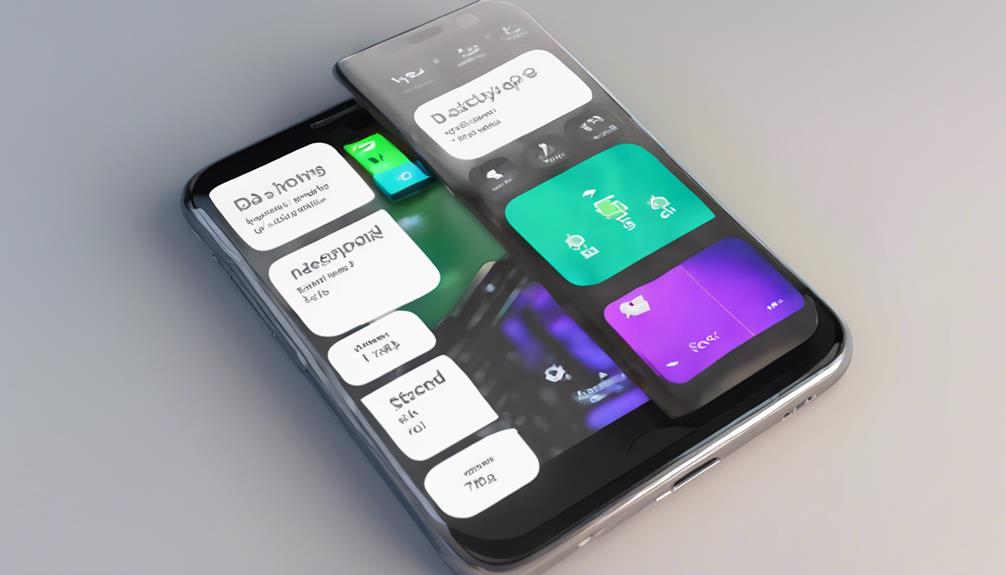
Clearing the cache and data of an app can greatly enhance its performance and free up valuable storage space on your Android device.
Regular cache management not only improves speed but also helps with data storage issues.
Here's how you can do it effectively:
- Open Settings: Navigate to your device's settings menu.
- Select Apps: Find and tap on the “Apps” or “Applications” section.
- Choose the App: Scroll through the list and select the app you want to clear.
- Clear Cache and Data: Tap on “Storage,” then choose “Clear Cache” followed by “Clear Data.”
Use Safe Mode
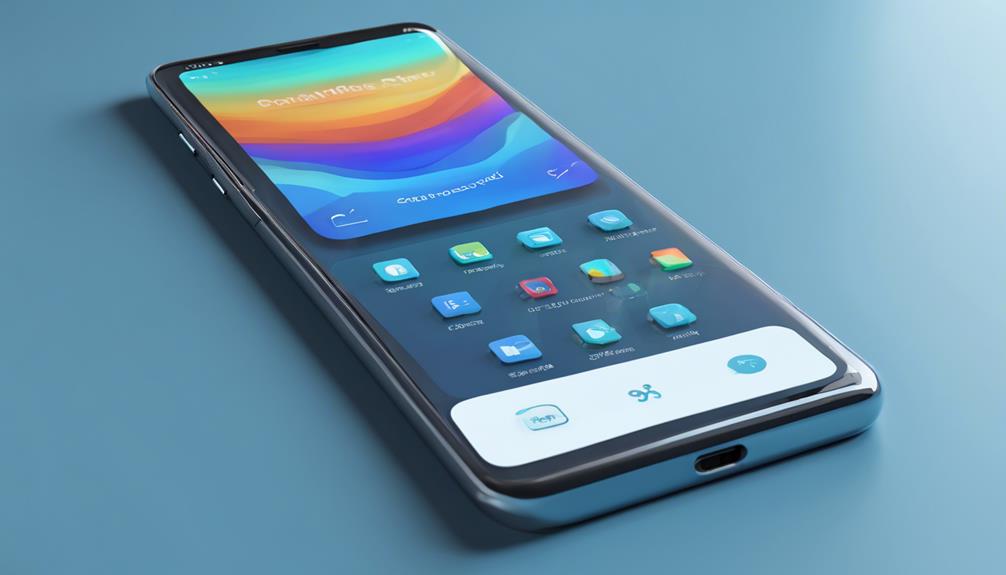
Using Safe Mode can help you uninstall problematic apps that might be causing issues on your Android device. This mode temporarily disables third-party apps, allowing you to troubleshoot effectively. If an app's giving you a headache, booting into Safe Mode is a smart move.
Here's a quick overview of the safe mode benefits and troubleshooting tips:
| Safe Mode Benefits | Troubleshooting Tips | Additional Notes |
|---|---|---|
| Disables third-party apps | Restart your device first | Safe Mode may vary by device |
| Protects system stability | Check for app interference | Easily return to normal mode |
| Simplifies uninstallation | Access settings without distractions | Useful for persistent issues |
| Helps identify problem apps | Consider app alternatives | Always back up your data |
| Reduces system strain | Perform regular maintenance | Note any recurring problems |
To enter Safe Mode, press and hold the power button, then tap and hold the “Power off” option until you see “Reboot to safe mode.” Once you're in, you can go ahead and uninstall those troublesome apps. Embrace this method; it's a great way to reclaim your device!
Uninstall via Settings
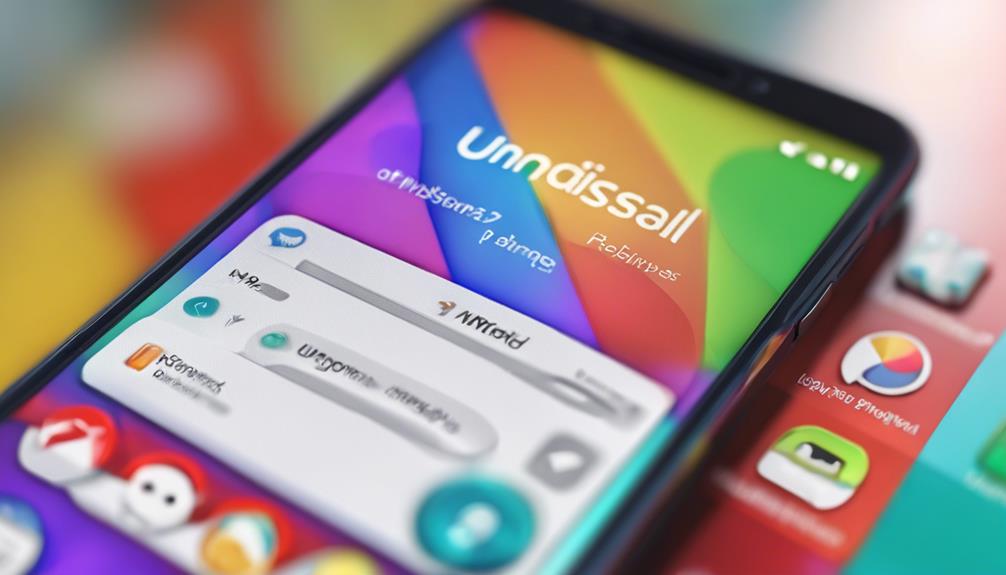
Once you've booted into Safe Mode and identified the troublemaker apps, you can easily uninstall them through your device's Settings. This process is essential for effective app management, ensuring your device runs smoothly.
Here's how to navigate your settings:
- Open Settings: Locate the gear icon on your home screen or app drawer.
- Select Apps: Scroll down to find the 'Apps' or 'Application Manager' option.
- Find the App: Browse through the list to find the app you want to uninstall.
- Uninstall: Tap on the app and select 'Uninstall' to remove it from your device.
Consider Third-Party Tools

Third-party tools can simplify the uninstall process by providing additional features and functionalities that your device's native settings might lack. If you're struggling to remove stubborn apps, consider using app management tools that offer a user-friendly interface and more robust options. These alternative uninstallers can often bypass restrictions that come with standard Android settings, allowing you to get rid of unwanted software more effectively.
When you explore these tools, look for ones with high ratings and positive reviews. Popular options like CCleaner or SD Maid not only help with uninstalling apps but also assist in cleaning up residual files and optimizing your device's performance. You'll find that they make managing your apps feel seamless, giving you back control over your device.
Before you engage, make sure to read the permissions these tools require. Trustworthy apps prioritize your privacy and security. By incorporating these app management tools into your routine, you'll feel empowered and part of a community that values efficient tech solutions.
Conclusion
You're now equipped to tackle those stubborn apps that cling like shadows in the night. By following these steps, you can reclaim your device, letting it breathe easier and run smoother.
Imagine your home screen as a garden; when you remove the weeds, the flowers can finally flourish.
So, go ahead—pluck out those unwanted apps and watch your phone bloom with newfound efficiency and clarity. Your digital space deserves to shine!






